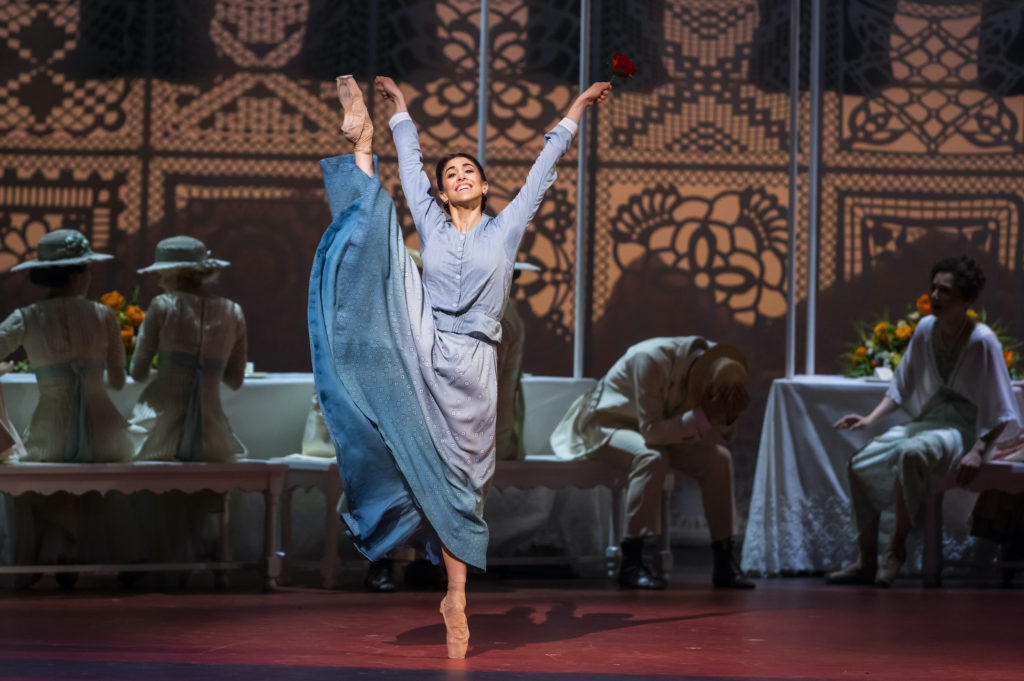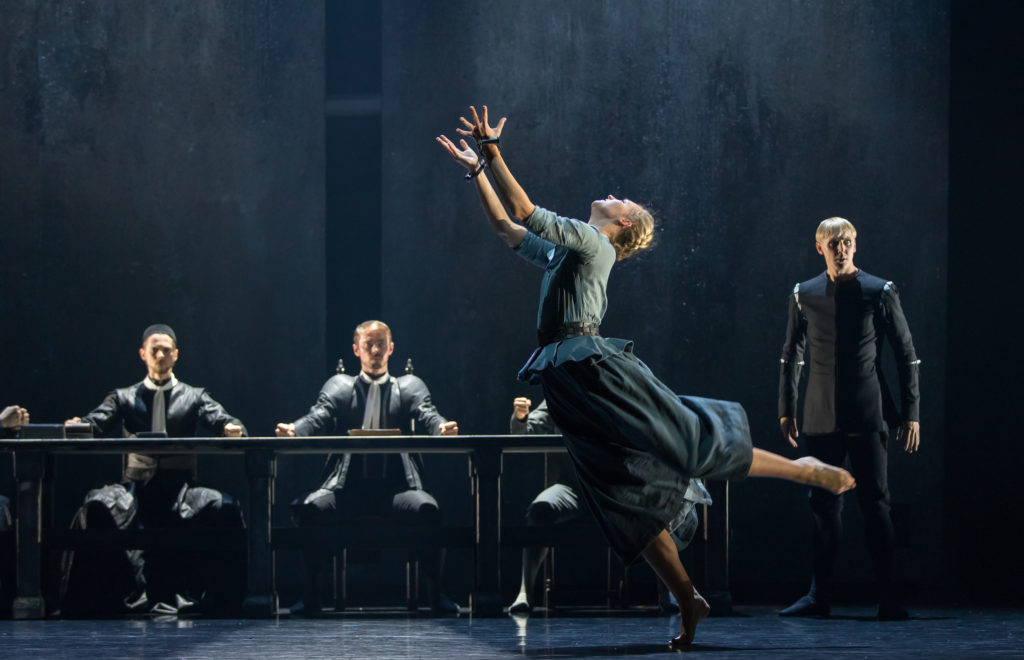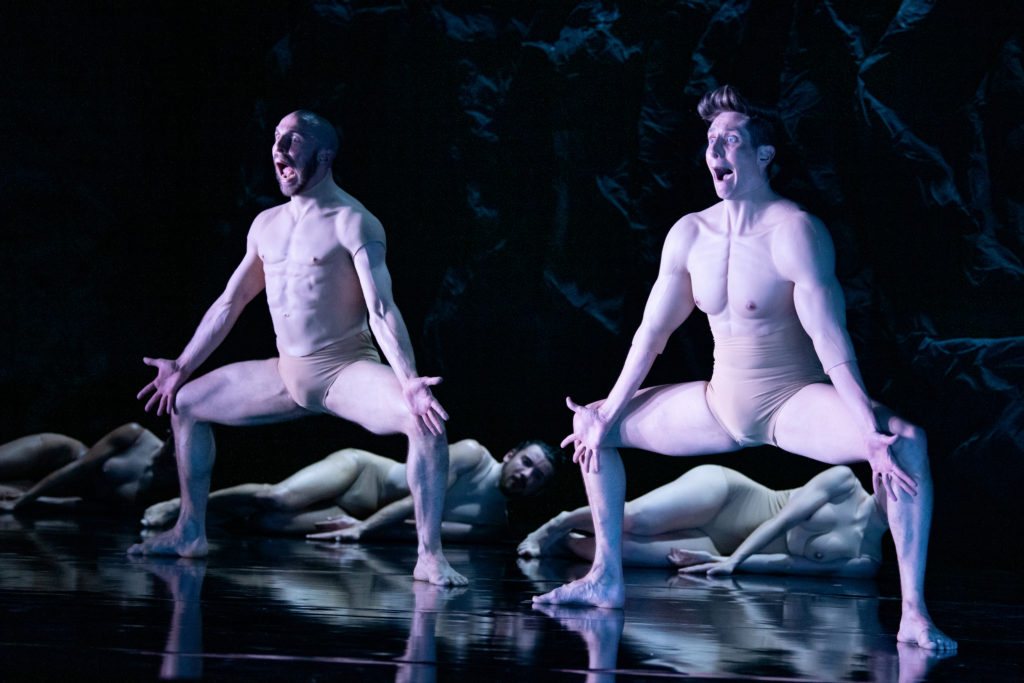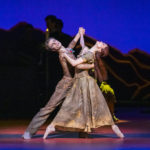London: Like Water for Chocolate, and other stories - Vancouver Ballet Society
- Home
- City Reports 2020 - 2023
- London: Like Water for Chocolate, and other stories

By Sanjoy Roy
When narrative dance works well, it’s gripping: the story is embodied in the performance. When it doesn’t, it looks like much ado about something or other: we sense the physicality but not the story. Like Water for Chocolate, Christopher Wheeldon’s new three-act work for the Royal Ballet (a co-production with American Ballet Theatre) bounds, with some gusto, between both sides of that divide. Based on Laura Esquivel’s multigenerational, magic-realist novel about lovers who are prevented from marrying by social convention, the ballet doesn’t so much establish as chase its characters and connections (even the printed synopsis runs to over a thousand words). That can be enthralling when dance and drama run neck and neck; elsewhere, the plot races ahead, leaving us in the dust.

Yet, at its June premiere at the Royal Opera House, there were other pleasures aplenty. Bob Crowley’s designs are magnificent, with patterned panels, hot colours, projections of fires and storms; Joby Talbot’s cinematic score is also full of colour and texture. The dancers throw themselves headlong into their roles: Yasmine Naghdi and Cesar Corrales, as lovers Tita and Pedro, embody the high tension between impetuousness and correctness; Fumi Kaneko, a marvellous matriarch, is curdled by her own thwarted history. And there are several coups de théâtre: a row of bridesmaids in white who become widows in black with a simple half-turn; a bucking bronco puppet, which Tita’s sister rides in erotic ecstasy; a shock-haired witch in mile-long robes; a circus-like apotheosis, the reunited lovers rising on a rope above their worldly descendants. In truth, it’s all a bit much. My advice: get your kicks where you can.
Helen Pickett’s The Crucible takes another complex narrative — Arthur Miller’s 1953 play about the Salem witch-hunts in 17th-century Massachusetts — but gives it a very different treatment in her two-act production for Scottish Ballet, visiting Sadler’s Wells in June nearly three years after its Edinburgh premiere. Rather than flesh out the drama like Wheeldon, Pickett strips the story to its bones, both as plot and as production. The spare set and costumes paint a puritanical picture of the tight-knit community, while the score, by Peter Salem (his real name), adds moods and mysteries with high-tension strings, electronic wind, and whisperings.

But it’s the storytelling that grips right from the beginning, in a scene the play refers to only in flashback: the adulterous affair between upstanding townsman John Proctor (Nicholas Shoesmith) and his maid Abigail (Constance Devernay). Where Esquivel’s novel pits romantic love against a repressive society, here a transgressive act of desire palpably arises from its social context. The story plays out as a web of power struggles — between Abigail, Proctor, and his wife Elizabeth (Sophie Martin); between the white women and the black servant Tituba (Rishan Benjamin); between the law and the community; and, most forcefully, between unruly pubescent women and organized men of God.
Pickett’s choreography combines expressive individual gestures with impersonal codes of conformity: arms crossed in righteousness, groups arrayed and aligned. If the machinations of Act 2 are less straightforward to follow than the unravellings of Act 1, the piece always keeps society within its sights. While Miller’s play was a response to McCarthyism in 1950s America, its story of a social body convulsed by its own internal, imbalanced power struggles remains chillingly relevant today.
Another work at Sadler’s Wells also mined the interplay between individual and group, here structured around an idea of protest as a collective movement that allows diversity rather than enforcing conformity. In any attempt will end in crushed bodies and shattered bones, Belgian choreographer Jan Martens gives the stage to 17 dancers aged 17 to 70, with different training, physiques, races, genders and (as revealed during some talking sections) sexualities, languages, countries of origin and residence — every one of them a strong dancer, as they must be for this bracing, abrasive, and ultimately inspiring 90-minute no-interval performance.

The choreography is a kind of brickwork, each dancer bringing individual blocks of action that fasten to the music — Górecki’s formidable Concerto for Harpsichord and String Orchestra — until the stage is filled with socially-distanced dancers (the piece bears a distinctively pandemic stamp). This brickwork happens again, and again. And again. There are occasional interludes, with readings from Kae Tempest’s performance poetry, with internet hate-speech projected onto a backcloth, with quiet but compelling sections of simple walking in organically evolving formations. At the brickwork’s final return, along with the Górecki, the dancers have changed from neutral grey to fierce, flamboyant red. If Górecki’s music makes much of ostinato (“stubborn”) structures — fragments that keep insisting on their own presence, refusing to go away — Martens’ choreography does the same, not just in its bricks of movement, but in its foundational idea: this is manifestation, this is protest.

Rambert responded swiftly to the pandemic with several digital-first works, and their May triple bill at Sadler’s Wells opened with a crossover from screen to stage. Like Wim Vandekeybus’ earlier Draw From Within (reviewed here in 2021), Imre and Marne van Opstal’s Eye Candy draws strength from its origins: the dancers’ android articulations look possible only in some digitally manipulated simulation — yet here they are, live onstage. If the work’s concept — idealized super-humans, enhanced with silicone muscles (men) and curves (women) — wears a bit thin, the dancing remains fantastically watchable.
Ben Duke’s new Cerberus, a comic and ultimately moving meta-take on the story of Eurydice crossing into the Underworld, followed. The entire piece is built on moving from stage right to stage left, with dancers “dying” into the wings and moving offstage into the afterlife.
Finally, in complete contrast (no English irony and self-deprecation, much Californian sincerity) was Alonzo King’s 2000 work, Following the Subtle Current Upstream, a lyric composition that undulates effortlessly through pairings and groupings. Beautifully danced, it seemed almost Arcadian, a quietly spiritual vision only two decades old that already feels a long time gone.

